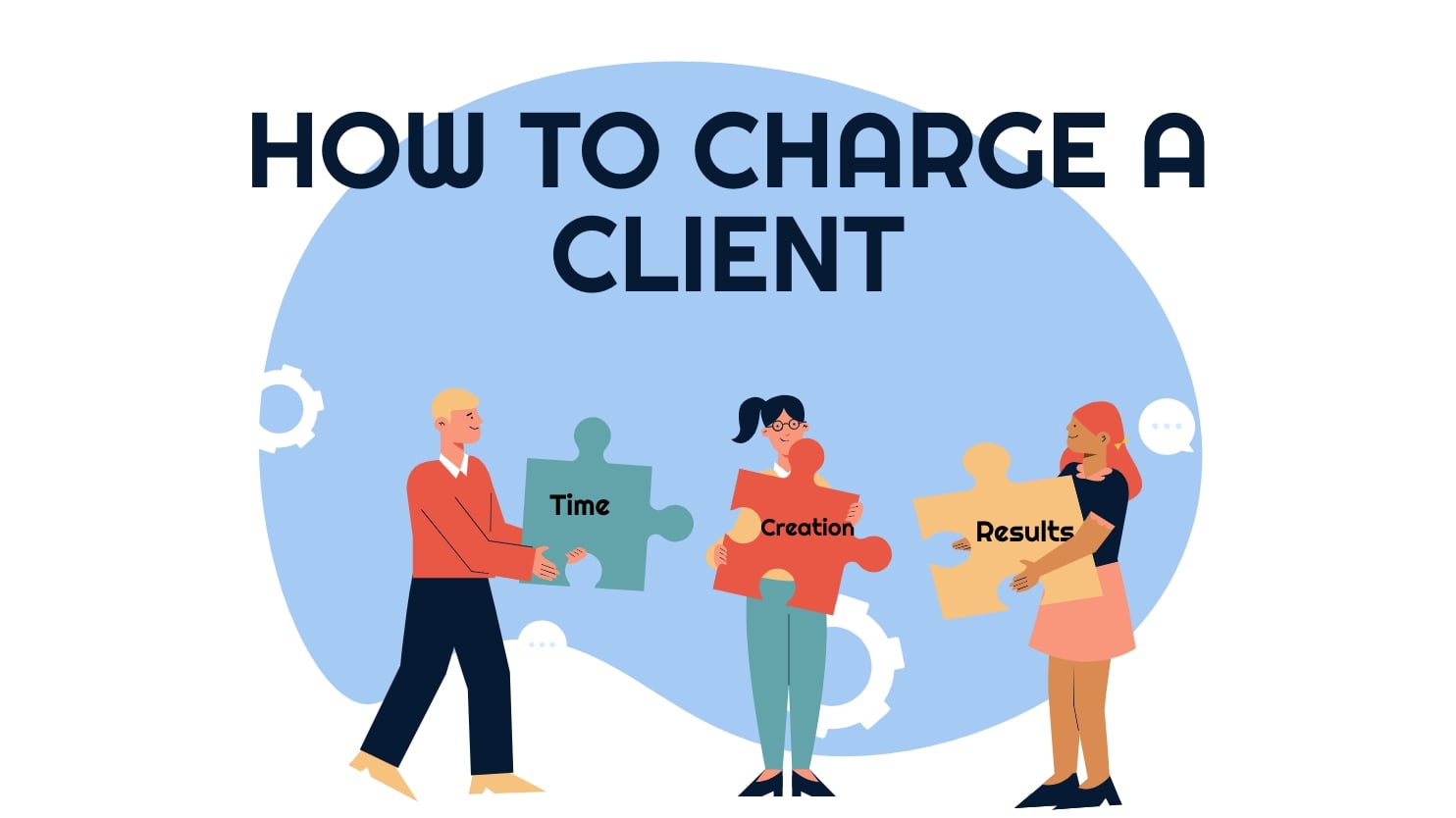How To Charge A Client: Time, Creation, Or Results


Unclear Pricing Doesn’t Get You Clients
A freelancer’s hardest task is getting clients. You can be the best vendor or consultant in the world, yet if you cannot attract and retain a clientele, your work doesn’t matter. Part of gathering clients is determining how much you will charge them. You can only calculate how much to charge a client by using three methods of measurement:
- Through time spent working
- By what you’ve created for them
- Or by using measurable results.
You may use a mix of all three of these methods but, there will always be an anchor. The anchor will be the main method by which all negotiation revolves around. In my field of copywriting, I charge by what I create. Instead of charging for my services by hourly rate, I charge by article or word count. I could charge by the time it takes to write an article or by the number of page views an article generates, but I personally don’t like those pricing models. The exact method you use is large in part, determined by the type of services you are providing.
Always Keep Your Pricing Flexible
When pricing your services, consider the exact dollar amount you will use as a starting point in your negotiations. You always want to be open to negotiating the price, as clients often provide you with more than just money in exchange for your work. A client’s value also comes from their network, as referrals are often the best way to grow your business and your reputation. A client’s value can also come from the project they are inviting you to contribute to, as certain projects are better for your portfolio than others.
Regardless of which of the three methods you decide to use, it is important to experiment with all three of them. Certain clients will only hire you if they can clock your hours, while others will only care about results and charge you a commission from actual revenue made. If your services necessitate it, you may want to include a retainer fee in your contract.
The retainer fee is a percentage of your services that you will charge before working for your client, which is used as proof that the client is committed to working with you. The price is usually between 5-10% of the total service fee but, you can charge more if your reputation allows for it. Some clients don’t accept retainer fees and you should use your best judgment when deciding to work with them. I would only work for a client without a retainer fee if they have a big network that I could leverage in the future.
Having a clear pricing model and a way of showing this to your clients before starting your work for them will always save you time in future discussions. You always want to make sure that your clients understand what it is you are doing for them and why they are being charged the price you are setting. If either of these are vague, you are doing your client a disservice. If you are shy about this topic of conversation when sending project proposals and setting initial client calls, there is a way to tackle that fear.
Questions Are The Best Starting Point When Explaining Your Pricing Structure
The best way to become more confident in talking about your fees is by showcasing your ability to understand your client. Instead of selling before naming the price of your fees, ask as many questions as possible. This will provide you with information necessary to tie your fees to their needs. When describing why you are pricing your services using your time, output, or results — bring the topic of conversation back to what the client needs from you.
If a client truly needs your services and if you are able to demonstrate how your services will clearly solve their problems, the conversation of setting your price will be easier to navigate. Hopefully, you will be able to communicate that you are charging not only for your services but, for an ongoing relationship with the client. You are charging to solve their current and future problems.
Lastly, finding the right price for your clients comes with experience. Additionally, you don’t need to leverage your own experience. Researching the advice of expert freelancers in your field can give you a ballpark figure to start working with. At the end of the day, play with the numbers.
If you find that prospective clients aren’t receptive to the current prices you are setting, perhaps you are charging too much or you need better clients. Experimentation will be the only way to determine which of these two scenarios is the real one.